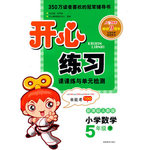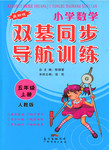题目内容
5.Eliza Doolittle,a poor flower girl who was ambitious to improve herself,came from the west end of London.She made a living by (61)selling(sell)flowers in the streets.One day,she met with Professor Higgins who was (62)an expert in phonetics,convinced that the quality of a person's English depended on his or her position in society.Professor laughed at Eliza's terrible English and promised(63)proudly (proud) that once taught to speak properly,the girl could pass(64)herself off in three months as a duchess at an ambassador's garden party.Eliza thought that it was a chance for her (65)to change(change)her life.So she went to Higgin's house and asked him to teach her but (66)was refused (refuse).At that time,professor's friend Colonel Pickering,an officer in the army,was interested in the girl's (67)education (educate).He bet with the professor that he might not teach Eliza successfully,(68)which made the proud professor accept Eliza (69)as a student and decided to teach her not only pronunciation (70)but also grammar.分析 本文讲述的是萧伯纳的《茶花女》.
伊莉莎•杜利特尔,一个来自伦敦西区卖花的渴望提高自己的女孩.有一天,她遇到了相信一个人的英语质量取决于他或她社会地位的语音学专家希金斯教授.教授嘲笑了她的可怕的英语并承诺,一旦学会了高标准的发音,女孩可以通过自己在三个月后成为大使的花园聚会公爵夫人.伊莉莎认为这是她改变生活的机会.所以她去希金的家,要他教自己,但被拒绝了.当时,教授的朋友上校皮克林,一名在军队的军官,对女孩的请求感兴趣.他打赌,教授不可能成功教会伊莉莎,使骄傲的教授接受伊莉莎作为一个学生,不仅决定教给她发音更教她语法.
解答 61.selling.考查非谓语动词,做介词by的宾语用doing.表示"她靠买花为生".
62.an.考查冠词.修饰可数名词expert 用an表示"一位专家".
63.proudly.考查副词.修饰动词 promised用副词,表示"骄傲的承诺".
64.herself.考查反身代词.因为句子的主语和宾语都是the girl,所以宾语用反身代词.表示"让她自己假扮伯爵夫人".
65.to change.考查非谓语动词.it is a chance for sb to do sth表示"对某人来说是做某事的机会",本句表示"Eliza 认为这是一个改变自己生活的机会".
66.was refused.考查谓语动词.refuse和主语she之间是被动关系,表示"她被拒绝了".
67.education.考查派生词.在物主代词the girl's后面用名词,表示女孩的教育.
68.which.考查关系词.定语从句made the proud professor accept Eliza 的先行词是这个句子,所以用which代指"这个赌约".
69.as.考查介词.修饰名词a student 用as表示"作为一个学生".
70.but.考查连词.根据not only 可知后面是but also,表示"不但…而且".
点评 考查语法填空.
形容词(包括副词)
形容词表示某一事物或的特征,副词表示某一动作的特征.
形容词和副词只有两种形式:原形和+er.
形容词修饰名词,说明事物或人的性质或特征.通常,可将形容词分成性质形容词和叙述形容词两类,其位置不一定都放在名词前面.
副词主要用来修饰动词,形容词,副词或其他结构.
一、副词的位置:
1)在动词之前.
2)在be动词、助动词之后.
3)多个助动词时,副词一般放在第一个助动词后.
二、副词的排列顺序:
1)时间,地点副词,小单位的在前,大单位在后.
2)方式副词,短的在前,长的在后,并用and或but等连词连接.
3)多个不同副词排列:程度+地点+方式+时间副词.
注意:副词very 可以修饰形容词,但不能修饰动词.

 开心练习课课练与单元检测系列答案
开心练习课课练与单元检测系列答案 开心试卷期末冲刺100分系列答案
开心试卷期末冲刺100分系列答案 双基同步导航训练系列答案
双基同步导航训练系列答案| A. | missed | B. | to miss | C. | missing | D. | miss |